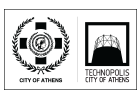DNA traces illuminate the past
The study of ancient DNA in comparison to genetic material sequences that exist in modern living organisms, including humans, has offered in the last three decades important information and has illuminated previously unknown events of the past. Among them stand out the gene contribution of archaic hominin species Neanderthal and Denisovan in the genetic material of modern humans, the mitochondrial heredity that defines maternal lineage of human ancestry and the Y chromosome heredity that defines paternal lineage of human ancestry. Studies of DNA polymorphisms have revealed immigrations that occurred in the distant past, including the immigration of Middle East farmers to neolithic Europe of hunters-gatherers or the origin of Etruscans in central Italy from immigrant Lydians of Mesopotamian descent. In addition, in archeological material DNA sequences of pathogen microbes have been found, such as of typhoid fever Salmonella in the case of the Plague of Athens that occurred in the era of Pericles.
Participants:
Dr. Christos Yapijakis: Assistant Professor of Biology-Neurogenetics, School of Medicine, National Kapodistrian University of Athens
Dr. Christos Yapijakis is Assistant Professor of Biology-Neurogenetics at the School of Medicine, National Kapodistrian University of Athens and Director of Cephalogenetics Center. He conducted the first ancient DNA research in Greece and discovered that the cause of the Plague of Athens in 429 BC was the typhoid fever pathogen. He was a pioneer in Molecular Neurogenetics and Craniofacial Genetics establishing university laboratories. He has performed prenatal testing for more than ten genetic disorders, including some for the first time worldwide. He has co-authored more than 170 publications in international journals and books, with more than 2000 citations and Scopus h index 27. Ηis group has received various national and international funding grants, and he has served as an editorial board member in international journals of several fields.





